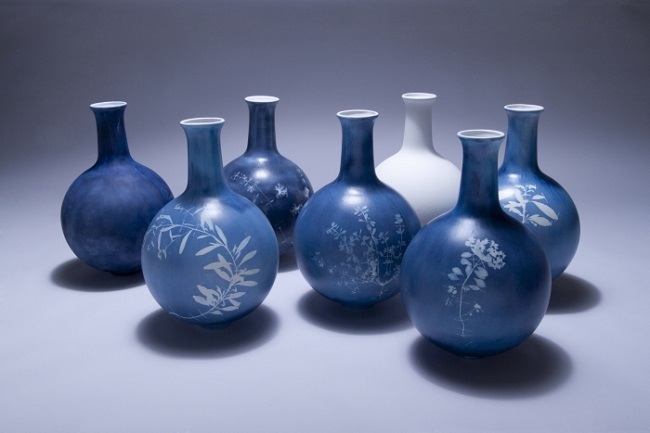Blueware by Glithero is a collection of ceramics made via cyanotype, a process still practiced in printmaking, which was invented in the mid 1800s and led to blueprints, the forerunner of the copier machine. The designers use photosensitive chemicals to capture direct impressions of botanical specimens on earthenware. The project has its roots in one of the earliest principles of photography and it plays upon the historical affinity between ceramics and the color blue. The designers say it is a project built upon the inventions of their Anglo-Dutch predecessors, shattered into small fragments, and kaleidoscopically rearranged.
To make the designs, Glithero find weeds from inner London borough pavements. The weeds are pressed, dried, and composed upon the surface of the vessels or tiles. These are treated with light-sensitive chemicals, and then exposed to ultra violet light, which develops a crisp, white photogram of the plant amid a deep Prussian blue.
Glithero is British designer Tim Simpson and Dutch designer Sarah van Gameren, who met when they were studying at the Royal College of Art, London. From their studio in London they create products, furniture, and time-based installations. Their work is presented in a broad spectrum of media, but follows a consistent conceptual path; to capture and present the beauty inherent in the moment that things are made. You can see this at work in the video below that illustrates how Glithero’s Blueware is made.
Above image: Blueware objects by Glithero. Courtesy of the designers. Photography by André Penteado.
The making of a Blueware vase. Video courtesy of Glithero.








Blueware by Glithero with production images. Courtesy of the designers. Photography by André Penteado.

Add your valued opinion to this post.